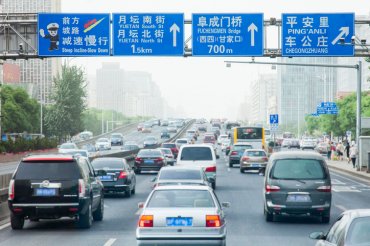LONDON – With Chinas passenger car parc set to continue revving through the next five years, experts at an industry event here last month said that diversified routes to market, strong brand reputation and improving formulations are keys for market share growth.
China will soon become the largest new vehicle market in the world, with its total fleet expanding to a projected 260 million units by 2020, according to Mark Davies, Lubrizols director strategic technology. The total lubricants market is set to continue its steady but gradual trajectory, growing at a compound annual rate of 3 percent through 2022, noted Petronas Marketing (China) Co. CEO Mark Gau. But in that same time frame, the passenger car motor oils market will grow by 8 percent.

Photo: powerofforever/iStock
China is projected to become the largest new vehicle market in the world, with its total fleet expanding to a projected 260 million units by 2020,
The speakers made three main observations about Chinas passenger car motor oil market at the ICIS World Base Oils and Lubricants Conference in London on Feb. 20: its growing remarkably, undergoing rapid quality requirement changes and becoming increasingly competitive.
Davies shared some insight into a Lubrizol study that recorded nearly 900 different engine oil products being sold in the marketplace and found that the top 20 on that list represented nearly half of the total volume. The research found 180 individual oil marketer brands or original equipment manufacturer genuine oils sold in China, but revealed that the top four brands in the former category accounted for more than 50 percent of total consumption. Although Lubrizol declined to disclose further information on the study, Davies summed up its findings: Chinas PCMO market is a highly complex and competitive market with an emphasis on brand.
To cope with the trends of the [PCMO] market in China, technology, route-to-market strategy and digital platform will be the key factors to win the competition, Gau said. Routes to market are changing, he continued, noting that internet-based sales channels are increasingly important, and sophisticated logistics and strong sales team organization and training are key to enhancing geographic coverage. Access to high-end feedstock is indispensable when it comes to developing high-end products to meet the product trends of future market.
Tomorrows lubricants formulations will be driven by technical requirements that are evolving rapidly due to stricter government emission standards. With emission control systems becoming standard in new cars, lubes compatible with the new hardware will be needed to ward off engine damage that would be caused by lubes popular in China today.
Emissions legislation is leading to a change in automotive hardware and the adoption of aftertreatment devices, Davies said. High-performance, lower-viscosity lubricants will begin to penetrate the market. Demand for higher-quality base oils, such as API Group II and Group III grades, and lower [sulfated ash, phosphorus and sulfur] additives will increase.
The worlds current highest-end engine oil specifications will become prominent benchmarks for Chinas quality requirements in coming years, both presenters noted. The American Petroleum Institutes SN grade of finished lubricants will dominate the sector, Gau said, to make up almost 60 percent of Chinas demand by 2020.
With updated formulas, marketers can focus on attracting more and stronger OEM partnerships to get factory-fill contracts and endorsements, Gau continued. Theyll need to develop unique products for OEMs to be differentiated from the rest of the products on the market, allowing for a focused penetration into the aftersales market.